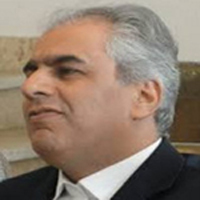Typology of Mohtasham Kashani's Personality through His Poems Based on Myers' Theory
The aim of this study is to identify the personality type of Mohtasham Kashani, the renowned 16th-century poet, through his poetry, based on the Myers-Briggs Type Indicator (MBTI).
This research employs a descriptive-analytical method. The theory of the sixteen personality types developed by Myers-Briggs, based on Carl Jung’s psychological theory, is used as the theoretical framework for analyzing Mohtasham Kashani’s personality. Data was gathered from his poetry and analyzed according to personality psychology indicators. The study examines various dimensions of personality, including "Introversion-Extraversion," "Sensing-Intuition," "Thinking-Feeling," and "Judging-Perceiving."
The analysis of Mohtasham Kashani’s poetry reveals that his personality aligns with the ESFP type. This personality type is characterized by sociability, extroversion, emotionality, and a focus on present experiences. Mohtasham Kashani’s poetry demonstrates a strong focus on emotions and sensory experiences, with less inclination toward long-term planning or logical thinking.
The results indicate that Mohtasham Kashani possesses an ESFP personality type, marked by extroversion, sensitivity to the environment, emotional depth, and flexibility. This personality type can provide insights into his behaviors and social interactions. Additionally, this analysis offers new perspectives in the field of literary personality analysis and highlights the importance of modeling the personalities of influential cultural and literary figures.
-
A Study of Kaveh the Blacksmith’s Uniqueness in Ferdowsi’s The Shahnameh with an Approach to Urban Iranian Thought and World Myths
Seyyed MohammadReza Ghoreishi, Saeid Kheirkhah *, AbdolReza Modarres Zadeh
Scientific Quarterly of Interpretation and Analysis of Persian Language and Literature Texts (Dehkhoda), -
A research on Saadi's poetic style based on the element of language
Leyla Miri, Asghar Dadbeh *, Abdolreza Modarreszadeh
Journal of Literary criticism and stylistics Research,



